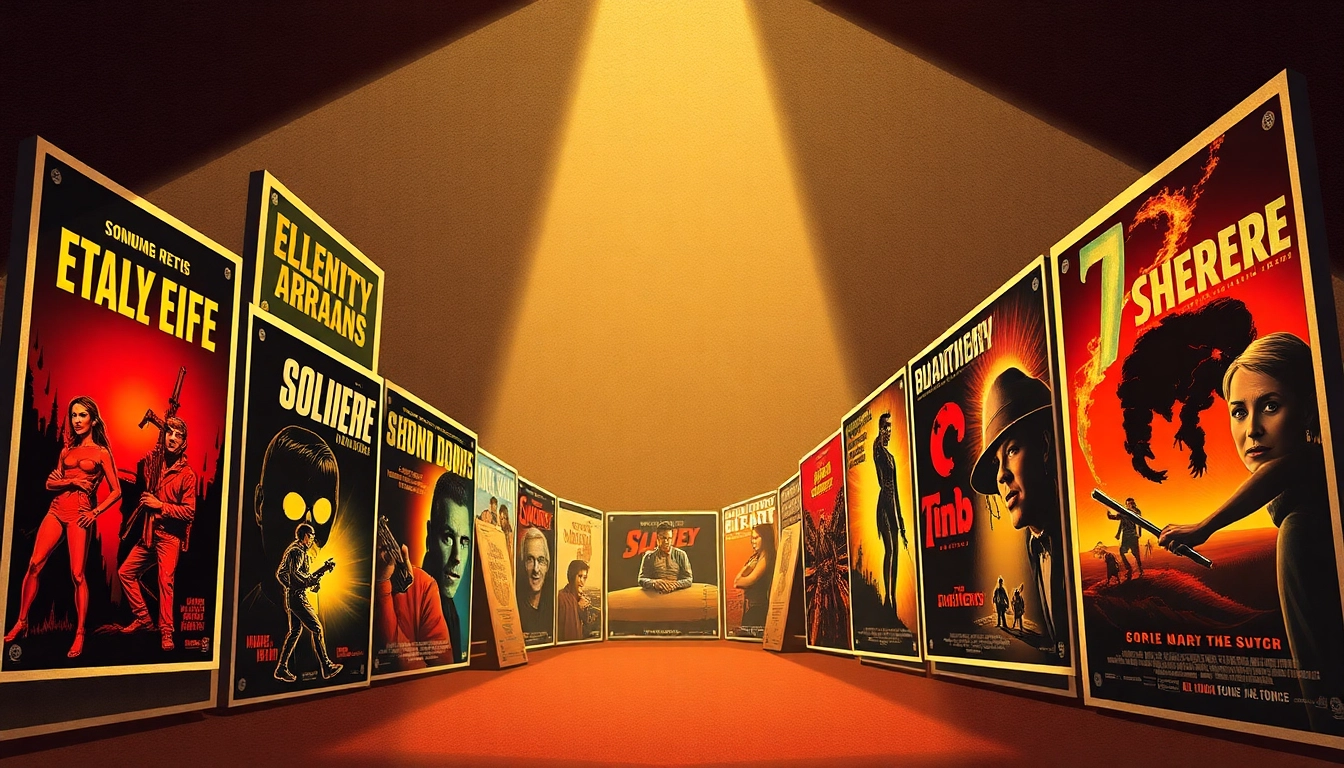Unlocking the Classics: A Comprehensive Guide to Public Domain Films

Understanding Public Domain Films
Public domain films are often treasures waiting to be discovered. A public domain film is one that is no longer protected by copyright, allowing it to be freely accessed, used, and distributed. The reasons for a film entering the public domain can vary widely, from the expiration of the copyright term to intentional waivers by the copyright holder. While the allure of classic cinema sparks curiosity, understanding public domain films requires a deeper dive into their definitions, history, and cultural significance.
What Are Public Domain Films?
Public domain films are characterized by their absence of copyright protection, which typically means anyone can view, use, or adapt these films without seeking permission or paying royalties. This lack of restriction opens a myriad of possibilities for filmmakers, educators, and general audiences. The public domain encompasses a broad range of works, including literature, music, and of course, films.
In the United States, the law states that works published before 1923 are automatically in the public domain. However, the expiration of copyright can be a complex process since the duration of copyright can differ based on whether a work was published with a copyright notice, its date of registration, and the specific copyright laws applicable during the time of publication.
The Importance of Copyright Duration
Understanding the timeline of copyright protection is crucial for recognizing public domain films. Copyright laws across the world vary, but generally, a film’s copyright lasts for the life of the creator plus a specific number of years—typically 70 years. In the case of corporate works, copyright lasts 95 years from publication or 120 years from creation, whichever is shorter. Therefore, films produced in the early 20th century are now regularly entering public domain, creating a surge of classic cinema that is freely accessible.
Common Misconceptions about Public Domain
Despite the clarity of some elements regarding public domain films, several misconceptions can lead to confusion. One common belief is that simply because a film is old, it must be in the public domain. However, this isn’t true; copyright status must be verified. Additionally, the misconception that all public domain films are of lesser quality overlooks the presence of many critically acclaimed classics that are now public domain, such as Night of the Living Dead and It’s a Wonderful Life.
Exploring Notable Public Domain Films
Now that we understand what public domain films are, let’s explore some notable titles that are worth viewing. The availability of these films enables audiences to watch and appreciate cinematic history without any barriers.
Top Public Domain Films to Watch
There’s a wealth of entertaining and thought-provoking content among public domain films. Here are some top recommendations:
- Night of the Living Dead (1968) – A groundbreaking horror film that set the template for zombie movies.
- The Little Princess (1939) – A heartwarming adaptation of Frances Hodgson Burnett’s beloved children’s novel.
- His Girl Friday (1940) – A classic screwball comedy featuring razor-sharp dialogue and fast-paced storytelling.
- Metropolis (1927) – A pioneering sci-fi film known for its stunning visuals and thematic depth.
- The General (1926) – Buster Keaton’s silent film masterpiece combines humor and action in the setting of the American Civil War.
Cult Classics in the Public Domain
Cult classics are often films that gained popularity long after their initial release, and many of these titles have entered the public domain.
Examples include:
- Manos: The Hands of Fate (1966) – A notoriously bad horror film that has achieved a “so bad it’s good” reputation.
- Santa Claus Conquers the Martians (1964) – A bizarre holiday film that has become a favorite among viewers for its unintentional humor.
Discovering Hidden Gems
Beyond the well-known public domain films, there are numerous hidden gems for audiences to discover. Films such as The Last Man on Earth (1964) and The Phantom of the Opera (1925) exhibit extraordinary craftsmanship and storytelling. These films may not enjoy mainstream recognition, but they offer compelling content that enriches the viewer’s experience.
Where to Find Public Domain Films
Finding public domain films has become more accessible than ever due to advancements in technology and a growing number of dedicated online resources. Here’s where to start:
Online Resources for Public Domain Films
Several platforms provide comprehensive libraries of public domain films:
- Internet Archive – A massive digital library with thousands of films, including classic features and documentaries.
- YouTube – Many channels are dedicated to featuring public domain films, making them easy to view from anywhere.
- Public Domain Torrents – A website that offers movies in the public domain available for download.
- National Film Registry – They curate a diverse array of films each year, some of which enter the public domain.
Library Collections and Archives
Many public and university libraries maintain film archives that can be accessed by patrons. Resources like the Library of Congress and various state archives feature collections that include public domain films worth exploring.
Film Festivals Showcasing Public Domain Works
Film festivals often include sections dedicated to public domain films, providing opportunities to see these classic works on the big screen. Events like the Public Domain Day celebration highlight the importance of these films in contemporary culture.
Using Public Domain Films Creatively
Public domain films are not just for passive viewing; they can be adapted and creatively reused in numerous ways. Here’s a look at how these films can be employed creatively.
Creating Derivative Works
Since public domain films are not under copyright restrictions, they provide an excellent opportunity for film students, amateur filmmakers, and artists to create derivative works. This could include remakes, mashups, or even animated adaptations of the original stories. The unrestricted nature of public domain materials encourages experimentation and innovation.
Public Domain Films in Education
Educators have a unique opportunity to utilize public domain films as teaching tools. Whether incorporating them into lessons about film history, storytelling techniques, or cultural studies, these films can facilitate discussions about artistic influence and social context.
Hosting Public Screenings
Public domain films can be featured in community screenings and film clubs. The ease of accessibility allows organizations to present classic cinema without the burden of licensing fees, making the appreciation of classic films a communal and celebratory experience.
Legal Aspects of Public Domain Films
Understanding the legal framework surrounding public domain films helps avoid potential pitfalls and ensures compliance with any applicable laws. Here’s what to keep in mind:
Navigating Legalities Around Public Domain
While public domain films are free to use, understanding the nuances of copyright law is vital. Factors such as the date of production, whether copyright was renewed, and original publication details play essential roles in determining a film’s current copyright status. For anyone wishing to use a public domain film for commercial purposes, confirming its status should be done rigorously.
How to Determine a Film’s Copyright Status
There are several steps to check a film’s copyright status. It involves investigating the initial publication date, searching for copyright notices, and reviewing whether the copyright has been renewed. Resources like the U.S. Copyright Office offer guidance, databases, and assistance in determining copyright status.
Future of Public Domain Films
The future of public domain films appears promising as more films enter the public domain each year. As copyright laws evolve and adapt, significant works from the past will gain a fresh audience. Additionally, as more digital platforms emerge, access to these films will only expand, further igniting interest in classic cinema.







